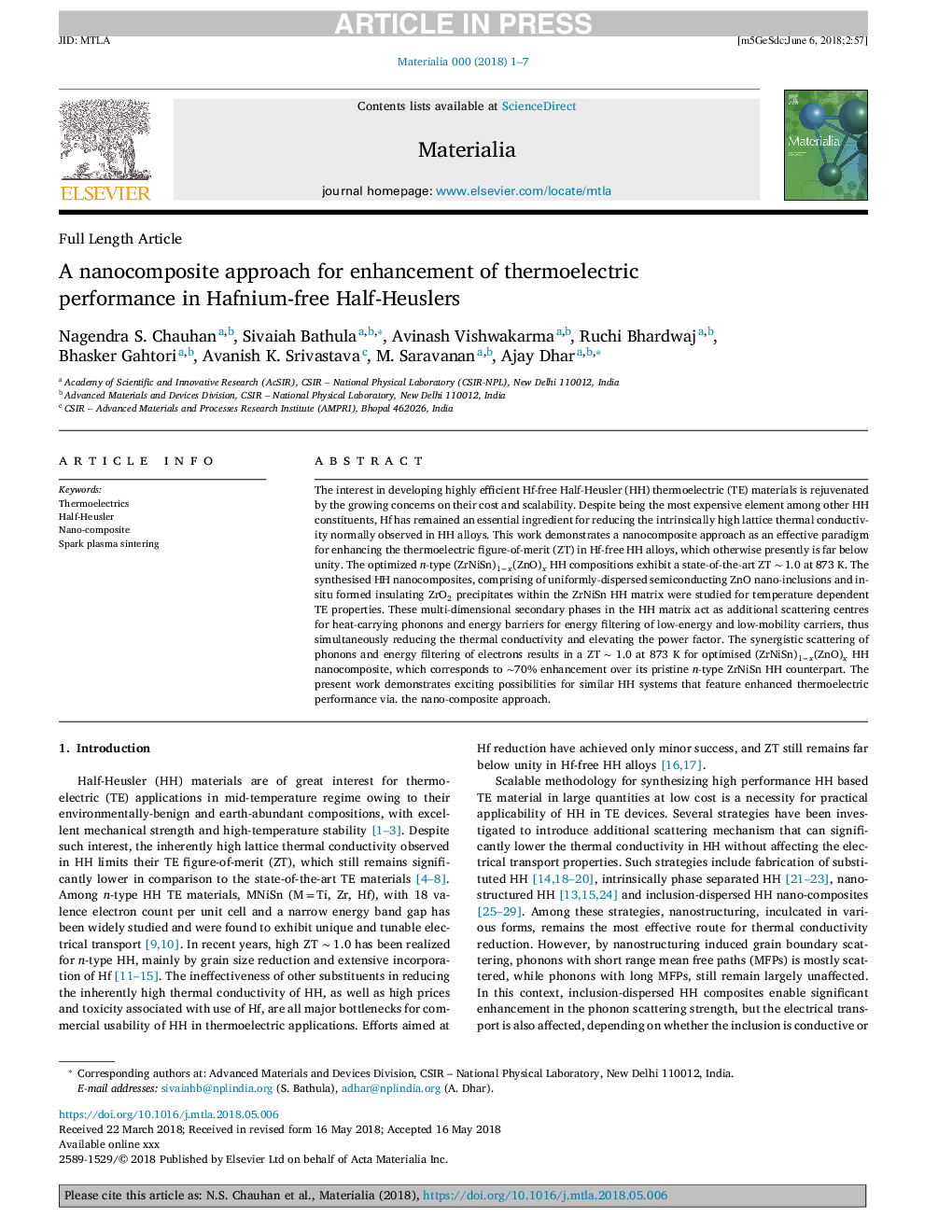| Article ID | Journal | Published Year | Pages | File Type |
|---|---|---|---|---|
| 8966275 | Materialia | 2018 | 7 Pages |
Abstract
The interest in developing highly efficient Hf-free Half-Heusler (HH) thermoelectric (TE) materials is rejuvenated by the growing concerns on their cost and scalability. Despite being the most expensive element among other HH constituents, Hf has remained an essential ingredient for reducing the intrinsically high lattice thermal conductivity normally observed in HH alloys. This work demonstrates a nanocomposite approach as an effective paradigm for enhancing the thermoelectric figure-of-merit (ZT) in Hf-free HH alloys, which otherwise presently is far below unity. The optimized n-type (ZrNiSn)1âx(ZnO)x HH compositions exhibit a state-of-the-art ZT â¼ 1.0 at 873Â K. The synthesised HH nanocomposites, comprising of uniformly-dispersed semiconducting ZnO nano-inclusions and in-situ formed insulating ZrO2 precipitates within the ZrNiSn HH matrix were studied for temperature dependent TE properties. These multi-dimensional secondary phases in the HH matrix act as additional scattering centres for heat-carrying phonons and energy barriers for energy filtering of low-energy and low-mobility carriers, thus simultaneously reducing the thermal conductivity and elevating the power factor. The synergistic scattering of phonons and energy filtering of electrons results in a ZT â¼ 1.0 at 873Â K for optimised (ZrNiSn)1âx(ZnO)x HH nanocomposite, which corresponds to â¼70% enhancement over its pristine n-type ZrNiSn HH counterpart. The present work demonstrates exciting possibilities for similar HH systems that feature enhanced thermoelectric performance via. the nano-composite approach.
Related Topics
Physical Sciences and Engineering
Materials Science
Biomaterials
Authors
Nagendra S. Chauhan, Sivaiah Bathula, Avinash Vishwakarma, Ruchi Bhardwaj, Bhasker Gahtori, Avanish K. Srivastava, M. Saravanan, Ajay Dhar,
